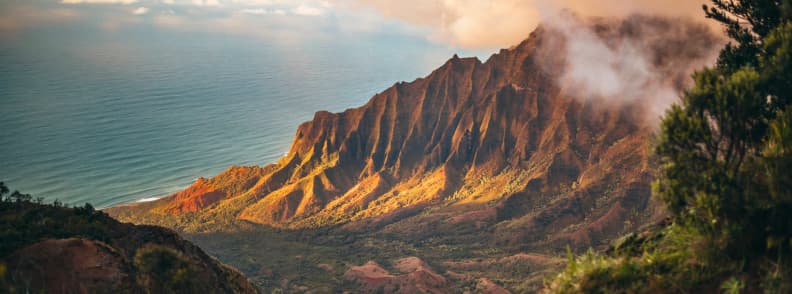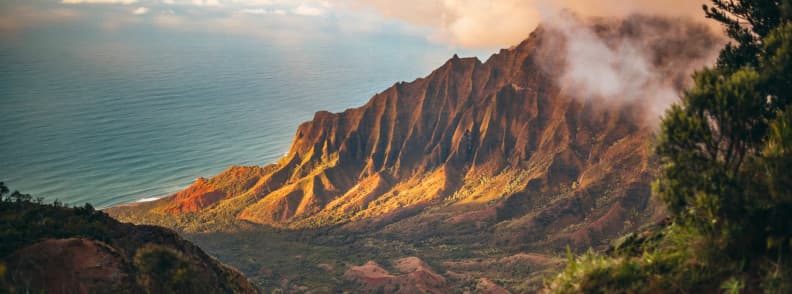“Unearthing the Wild Side: Hidden Wildlife Travel Gems in the USA
Related Articles Unearthing the Wild Side: Hidden Wildlife Travel Gems in the USA
- Europe On A Plate: A Budget Traveler’s Guide To Delicious And Affordable Food
- Eco-Friendly Art Lover Trips: Sustainable Travel For The Culturally Curious
- Family Luxury Travel: Creating Unforgettable Experiences For Kids And Parents
- Wildlife Travel Tips: A Comprehensive Guide To Responsible And Rewarding Encounters
- Guided Food Travel In The USA: A Culinary Journey Through Diverse Flavors
Introduction
Today, we’re excited to unravel an engaging topic: Unearthing the Wild Side: Hidden Wildlife Travel Gems in the USA. Join us as we navigate insights that inform, inspire, and open new perspectives for our readers.
Table of Content
Unearthing the Wild Side: Hidden Wildlife Travel Gems in the USA

The United States, a land of sprawling landscapes and diverse ecosystems, is a haven for wildlife enthusiasts. While national parks like Yellowstone and Yosemite often steal the spotlight, a wealth of lesser-known destinations offer unparalleled opportunities to connect with nature and witness the country’s remarkable biodiversity away from the crowds. For those seeking a more intimate and authentic wildlife experience, venturing off the beaten path can lead to unforgettable encounters with hidden gems.
1. Theodore Roosevelt National Park, North Dakota: Where Bison Roam Free
Nestled in the rugged badlands of North Dakota, Theodore Roosevelt National Park is a sanctuary for bison, wild horses, prairie dogs, and a variety of bird species. Unlike the bustling Yellowstone, this park offers a sense of solitude and tranquility, allowing visitors to immerse themselves in the untamed beauty of the Great Plains.
- Wildlife Highlights: Bison herds roaming freely, wild horses galloping across the plains, prairie dog towns teeming with activity, and a diverse array of bird species, including golden eagles and sharp-tailed grouse.
- Best Time to Visit: Spring and fall offer pleasant temperatures and optimal wildlife viewing opportunities.
- Activities: Hiking, scenic drives, wildlife viewing, horseback riding, and stargazing.
2. Congaree National Park, South Carolina: A Bottomland Hardwood Forest Paradise
Hidden away in the heart of South Carolina, Congaree National Park protects the largest intact expanse of old-growth bottomland hardwood forest in the southeastern United States. This unique ecosystem is home to an incredible array of plant and animal life, including towering trees, wading birds, river otters, and elusive bobcats.
- Wildlife Highlights: Towering trees, wading birds (such as herons and egrets), river otters, bobcats, and a variety of amphibians and reptiles.
- Best Time to Visit: Spring and fall offer comfortable temperatures and vibrant foliage.
- Activities: Hiking, canoeing, kayaking, birdwatching, and ranger-led programs.
3. Dry Tortugas National Park, Florida: A Tropical Island Escape
Located about 70 miles west of Key West, Dry Tortugas National Park is a remote island paradise teeming with marine life and birdlife. Accessible only by boat or seaplane, this park offers pristine coral reefs, crystal-clear waters, and a historic fort, making it a unique destination for wildlife enthusiasts.
- Wildlife Highlights: Vibrant coral reefs, sea turtles, seabirds (such as sooty terns and brown noddies), and a variety of fish species.
- Best Time to Visit: Winter and spring offer the best weather and wildlife viewing opportunities.
- Activities: Snorkeling, diving, birdwatching, exploring Fort Jefferson, and camping.
4. Katmai National Park and Preserve, Alaska: A Bear-Watching Paradise
While Alaska is renowned for its bear populations, Katmai National Park and Preserve stands out as one of the best places in the world to observe brown bears in their natural habitat. Brooks Falls, in particular, is famous for its salmon-snatching bears, providing visitors with unparalleled viewing opportunities.
- Wildlife Highlights: Brown bears fishing for salmon, bald eagles soaring overhead, and a variety of other wildlife, including moose, caribou, and wolves.
- Best Time to Visit: Summer (June-August) is the peak season for bear viewing.
- Activities: Bear viewing, fishing, hiking, kayaking, and flightseeing.
5. Great Basin National Park, Nevada: A High-Altitude Oasis
Rising from the arid desert of eastern Nevada, Great Basin National Park offers a surprising diversity of landscapes, from towering peaks to ancient bristlecone pine forests. This park is home to a variety of wildlife, including bighorn sheep, pronghorn, and a unique population of Bonneville cutthroat trout.
- Wildlife Highlights: Bighorn sheep, pronghorn, Bonneville cutthroat trout, and a variety of bird species.
- Best Time to Visit: Spring and fall offer pleasant temperatures and optimal wildlife viewing opportunities.
- Activities: Hiking, camping, stargazing, cave tours, and scenic drives.
6. Channel Islands National Park, California: A Biodiversity Hotspot
Often referred to as the "Galapagos of North America," Channel Islands National Park is a chain of five islands off the coast of Southern California. These islands are home to a unique array of plant and animal life, including the island fox, the island scrub-jay, and a variety of marine mammals.
- Wildlife Highlights: Island fox, island scrub-jay, seals, sea lions, dolphins, and whales.
- Best Time to Visit: Year-round, with whale watching being best in winter and spring.
- Activities: Hiking, kayaking, snorkeling, diving, whale watching, and camping.
7. Voyageurs National Park, Minnesota: A Water Wilderness
Located on the border between the United States and Canada, Voyageurs National Park is a vast network of interconnected waterways, forests, and islands. This park is a haven for wildlife, including wolves, moose, black bears, and a variety of bird species.
- Wildlife Highlights: Wolves, moose, black bears, bald eagles, and a variety of waterfowl.
- Best Time to Visit: Summer and fall offer pleasant weather and optimal wildlife viewing opportunities.
- Activities: Boating, canoeing, kayaking, fishing, hiking, and wildlife viewing.
8. Guadalupe Mountains National Park, Texas: A Desert Oasis
Rising from the Chihuahuan Desert of West Texas, Guadalupe Mountains National Park is home to the highest point in Texas, Guadalupe Peak. This park offers a surprising diversity of habitats, from desert canyons to forested mountaintops, supporting a variety of wildlife, including elk, mule deer, and a variety of bird species.
- Wildlife Highlights: Elk, mule deer, mountain lions, and a variety of bird species, including golden eagles and peregrine falcons.
- Best Time to Visit: Fall and spring offer pleasant temperatures and optimal wildlife viewing opportunities.
- Activities: Hiking, camping, stargazing, and birdwatching.
Tips for Responsible Wildlife Viewing
- Maintain a safe distance: Always observe wildlife from a distance, using binoculars or a spotting scope for a closer view.
- Respect their space: Avoid approaching or disturbing wildlife, especially during breeding or nesting season.
- Never feed wildlife: Feeding wildlife can alter their natural behavior and make them dependent on humans.
- Store food properly: Keep food stored in airtight containers and out of reach of animals.
- Leave no trace: Pack out everything you pack in and minimize your impact on the environment.
- Stay on marked trails: Avoid venturing off-trail, as this can disturb sensitive habitats.
- Be aware of your surroundings: Pay attention to your surroundings and be prepared for encounters with wildlife.
- Report any incidents: Report any incidents involving wildlife to park authorities.
The Allure of Hidden Wildlife Travel
Hidden wildlife travel offers a unique opportunity to connect with nature on a deeper level. By venturing off the beaten path, you can escape the crowds and immerse yourself in the tranquility of the wilderness. You’ll have the chance to witness wildlife in their natural habitat, observe their behavior up close, and gain a greater appreciation for the importance of conservation.
Furthermore, hidden wildlife travel often supports local communities and economies. By choosing to visit lesser-known destinations, you can help to promote sustainable tourism and protect these valuable natural resources for future generations.
In conclusion, the United States is a treasure trove of hidden wildlife travel gems waiting to be discovered. By venturing beyond the popular national parks and exploring these lesser-known destinations, you can embark on unforgettable adventures and connect with nature in a meaningful way. Remember to practice responsible wildlife viewing and leave no trace, ensuring that these precious ecosystems are protected for future generations to enjoy.




